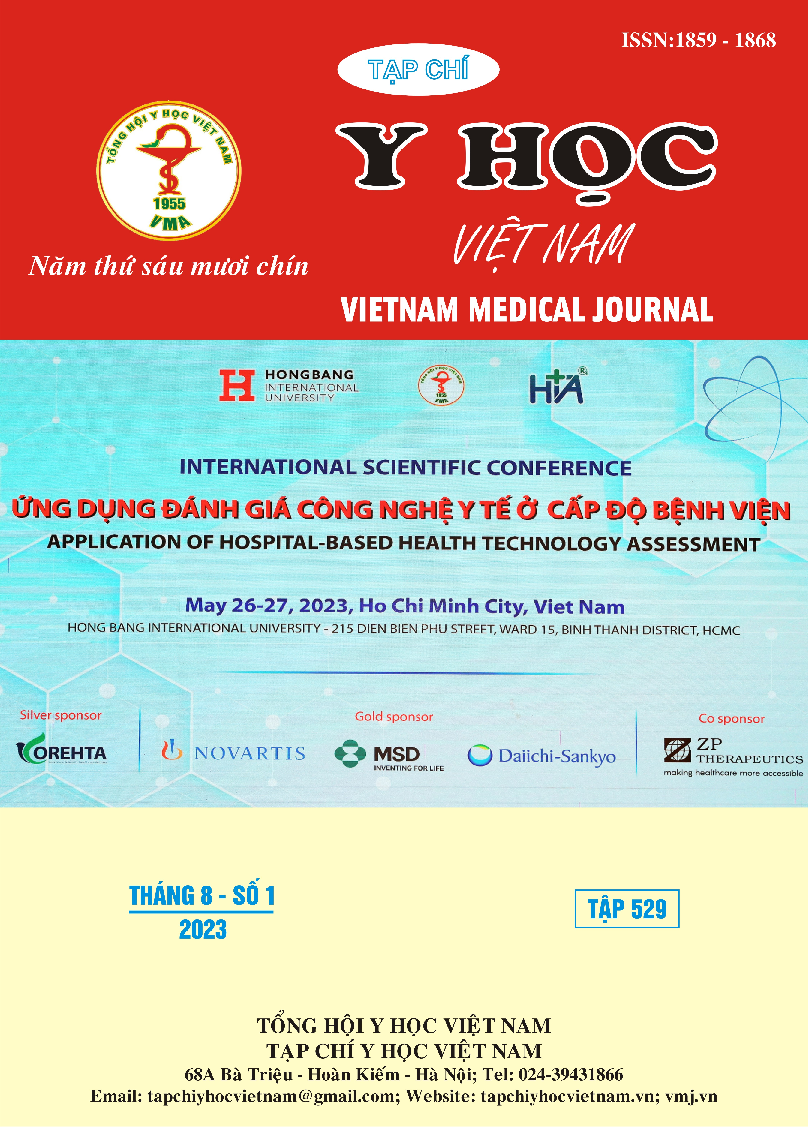CLINICAL, PARACLINICAL CHARACTERISTICS AND SOME FACTORS RELATING TO SEVERE NEONATAL RESPIRATORY DISTRESS AT QUANG NGAI HOSPITAL FOR CHILREN AND WOMEN
Main Article Content
Abstract
Background: Respiratory failure is a highly frequent syndrome in the neonatal period, especially in the first days after birth. Newborn respiratory distress rapidly progresses to apnea and then goes into cardiac arrest, increasing the risk of mortality. Objectives: To describe the clinical and paraclinical characteristics of newborn respiratory failure and some factors relating to severe neonatal respiratory distress at Quang Ngai Hospital for Women and Children. Method: A descriptive cross-sectional study was carried out on 162 cases. Among them, a retrospective of 112 cases between April 1, 2022 and August 11, 2022 and a prospective of 50 from August 12, 2022 to October 31, 2022. Results: Respiratory distress in neonates was common in males (59.9%). The male/female ratio was 1.5/1, after birth ≤ 24 hours old (84%). The average weight was 2542.8 ± 848.3 grams. Clinical manifestations of tachypnea (81.5%), children with severe respiratory failure (25.3%), hypoglycemia (29.6%), lesions detected on chest X-ray (79.0%). Common causes of respiratory failure are the alveolar liquid absorption slows (36.4%), endothelial disease (28.4%), neonatal pneumonia (17.3%). Some factors relating to severe neonatal respiratory distress: the rate of severe respiratory failure in males is more than in females. Children with a gestational age of <34 weeks have a higher rate of severe respiratory failure than those of a gestational age of ≥34 weeks. Children with a birth weight <1500 grams have a higher risk of severe respiratory failure than those who with a weight ≥1500 grams. Children with hypothermia have a higher proportion of severe respiratory failure than children without hypothermia. Conclusion: Neonatal respiratory distress usually occurs in preterm newborns, with low birth weight, on the first day after birth.
Article Details
Keywords
neonatal, respiratory distress syndrome.
References
2. Hoàng Thị Dung, Nguyễn Văn Sơn (2021), Đặc điểm lâm sàng, cận lâm sàng suy hô hấp ở trẻ sơ sinh tại Bệnh viện Trung ương Thái Nguyên, Tạp chí Nghiên cứu và Thực hành Nhi khoa, 5, (4), tr. 53-60.
3. Nguyễn Phan Trọng Hiếu, Trần Chí Thiện, Nguyễn Thành Nam (2022), Đánh giá kết quả điều trị suy hô hấp sơ sinh và một số yếu tố liên quan, Tạp chí Y học Việt Nam, 515 (1), tr.82-88.
4. Baseer Khaled a Abdel, Mohamed Mostafa (2020), Risk factors of respiratory diseases among neonates in neonatal intensive care unit of Qena University hospital, Egypt, Annals of global health, 86 (1).
5. Liu Jing, Yang Na (2014), High-risk factors of respiratory distress syndrome in term neonates: a retrospective case-control study, Balkan Medical Journal, 31(1), pp. 64.
6. Paraskevi Stylianou-Riga, Boutsikou Theodora, et al. (2021), Maternal and neonatal risk factors for neonatal respiratory distress syndrome in term neonates in Cyprus: a prospective case–control study, Italian journal of pediatrics, 47 (1), pp. 1-9.
7. Wen Yu-Hua, Yang Hwai-I (2019), Association of maternal preeclampsia with neonatal respiratory distress syndrome in very-low-birth-weight infants, Scientific reports, 9 (1), pp. 1-8.


